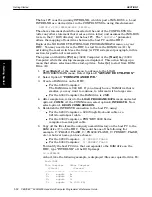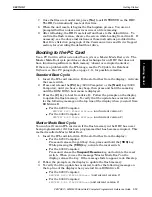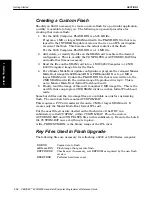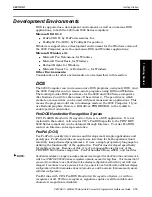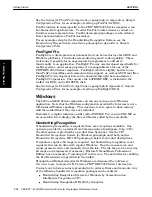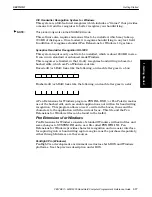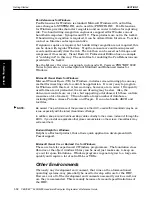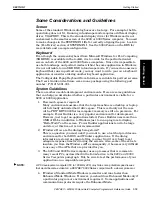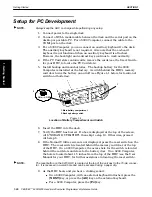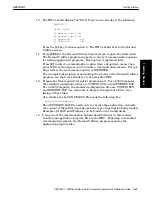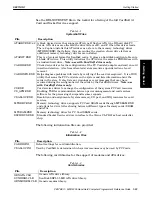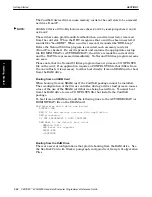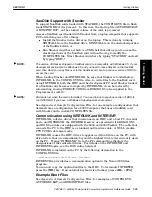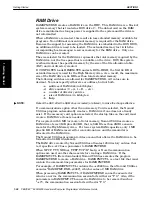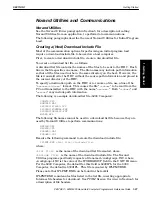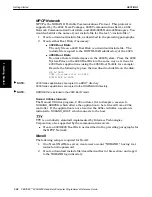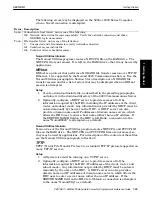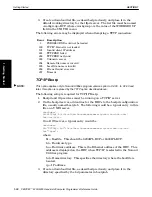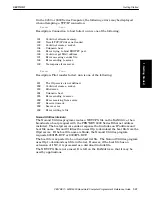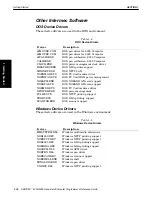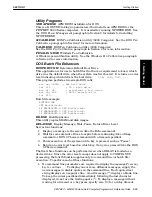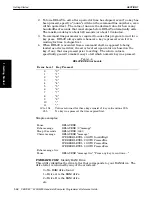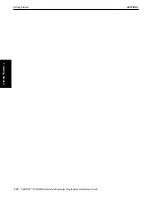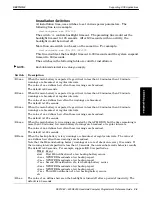
SECTION 1
Getting Started
1-26 PEN*KEY
R
6200/6300 Hand-Held Computer Programmer’s Reference Guide
RAM Drive
RAMDFMT.EXE creates a RAM Drive on the HHC. This RAM drive is a block of
system memory that is treated as DOS drive C:. The data stored on the RAM
drive is maintained as long as power is supplied to the system and the drive is
not reformatted.
When a RAM drive is created, this results in less extended memory available for
programs. No additional conventional memory is required for the RAM drive.
Because the support for accessing the RAM drive is embedded in the DOS BIOS,
no additional drivers need to be loaded. The extended memory test (with the
corresponding boot messages) reserves memory for the RAM drive. Only one
RAM drive can be created.
The size selected for the RAM drive represents the total memory required by the
RAM drive, not the free space that is available on the drive. DOS file system
overhead reduces the specified memory by the size of the file allocation table
(FAT) and root directory created.
If CONFIG.SYS loads HIMEM.SYS and sets DOS=HIGH, the first 64 KB of
extended memory is used for the High Memory Area. As a result, the maximum
size of the RAM drive is 64 KB less than total extended memory.
The following switches are allowed for RAMDFMT.EXE. All values are in
decimal. You must specify either size or address, but not both.
ća
a
ddress of RAM disk (in kilobytes)
ćd
d
rive number (0 = A, 1 = B, ... etc.)
će
number of directory
e
ntries
ćs
s
ize of RAM drive (in kilobytes)
ćh
h
elp
"
NOTE:
Reboot the HHC after the RAM drive is created (or altered), to make the change effective.
If a communications option other than Accessory Card is selected, the Norand
Utilities program automatically creates a RAM drive if one does not already
exist. If the accessory card option is selected, the startup files on the card must
create a RAM Drive if one is needed.
For a system with 6 MB (or more) of total memory, Norand Utilities creates a
RAM drive of size 3 MB plus 960 KB, that is, 64KB less than 4MB to ensure
room for the High Memory Area. For lower system RAM capacities, only 1 MB
plus 64 KB of RAM is reserved for conventional use and the remainder is
allocated to the RAM drive.
The Norand Utilities program provides a menu that allows the RAM drive to be
formatted in 64 KB increments.
The RAM drive created by Norand Utilities allocates 128 directory entries, that
is, it specifies će128 as a parameter to RAMDFMT.EXE.
When NPCP, TTY, NRInet, TFTP, TCP/IP bootp, or Novell communication
options are used, another choice exists for creating a RAM drive. If the
RAMDFMT.CTL file is downloaded, Norand Utilities executes the program
RAMDFMT.EXE to create a RAM drive. RAMDFMT.CTL is a text file that must
contain the commandĆline parameters for RAMDFMT.EXE.
For example, if RAMDFMT.CTL contains the ćs2048 line, then Norand Utilities
executes RAMDFMT.EXE ćs2048", which creates a 2 MB RAM drive.
When processing RAMDFMT.CTL, if RAMDFMT.EXE cannot be executed or
returns an error, the communication session fails with error F 0." Also, if the
parameters in RAMDFMT.CTL cause the RAM drive to be removed (such as
-s0"), the communication session fails with error F 0."
1. Getting Started

